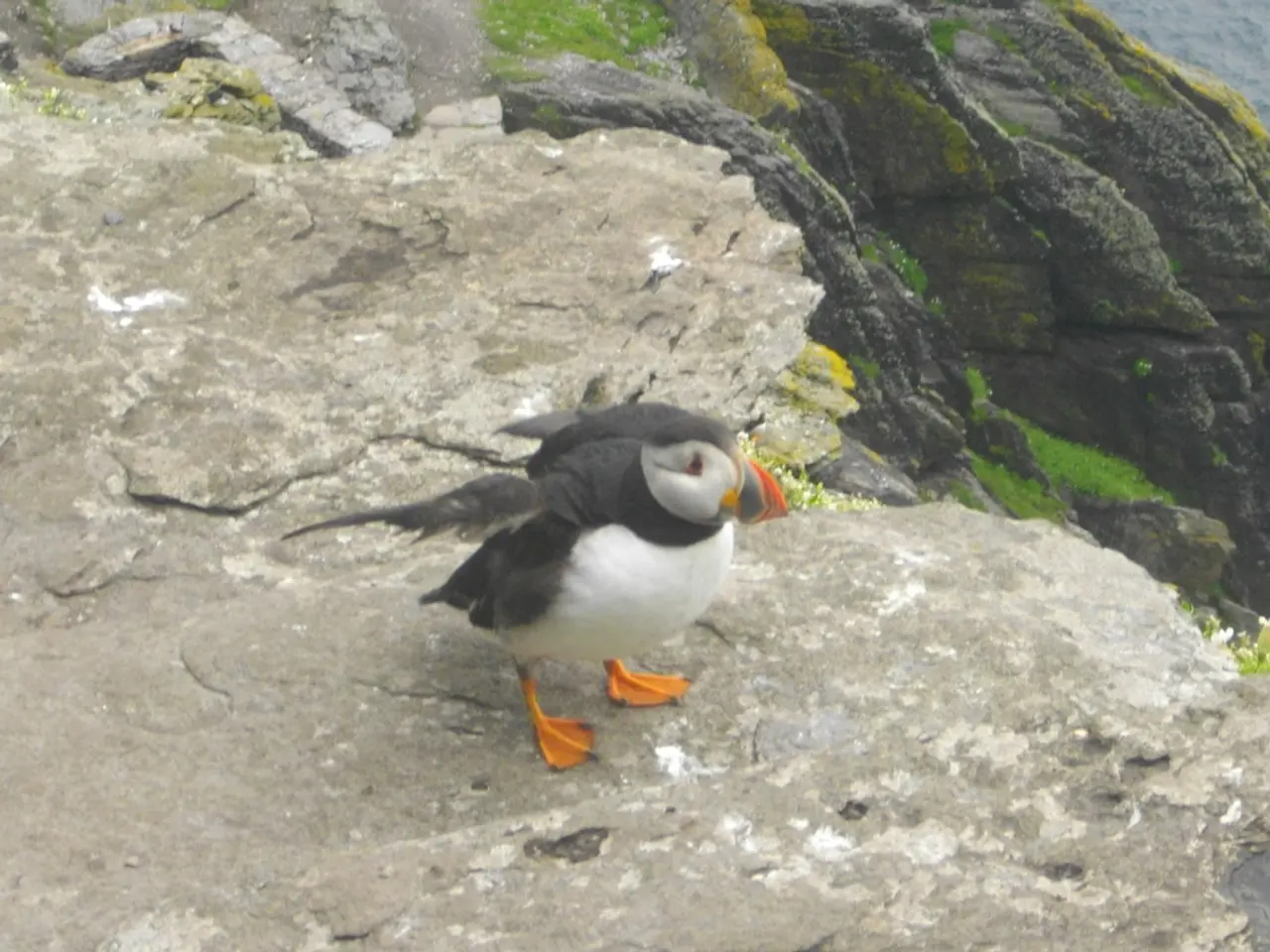Seabird Survivors of Ice Ages: The Ancient Tale of Puffins and Their Prehistoric Legacy
The Remarkable Resilience of Puffins
Puffins, the charming seabirds with their distinctive black-and-white plumage and colourful beaks, are found in the North Atlantic, ranging from Newfoundland to Norway. These charismatic creatures have an inspiring tale of endurance, a lesson in navigating life's challenges with grace and determination.
Puffins' beaks are not just for show; they are vital tools for survival. Over millions of years, their beaks have evolved to be perfectly suited for their feeding habits, such as catching and holding multiple fish at once. This adaptation is a testament to nature's incredible ability to endure and evolve.
Puffins have survived the ice ages through their migratory behavior, which enables them to move to more hospitable environments as needed, similar to a well-tuned GPS guiding them to safety when conditions became too harsh. Their lineage traces back to a time when mammoths roamed the earth, making them living fossils.
Puffins have developed several key adaptations to survive harsh, cold climates and the challenging oceanic environment. They have compact bodies with dense bones that reduce buoyancy for efficient diving. Their wings are adapted for "underwater flying," allowing them to pursue fish at depths. Their feathers are waterproof and insulating to retain heat in cold water.
Puffins nest in burrows or crevices on coastal islands, protecting eggs and chicks from predators and weather extremes. They have strong site fidelity and learned foraging knowledge, as evidenced by longevity studies of puffins like a 33-year-old bird who has survived decades by knowing optimal fishing spots.
However, the resilience of puffins is being tested by rapid climate change, which alters their marine prey availability and habitat conditions. Warmer waters shift fish populations, forcing puffins to potentially adapt their diet to new fish species in their range. Conservation efforts are being made to protect puffins and their habitats, and Puffin Day is a day to raise awareness about the challenges these birds face and the steps to ensure their survival.
Despite the threats they face, puffins continue to be a symbol of hope and perseverance. Their story teaches us about the power of adaptation and the importance of resilience. Puffins remind us that we too can adapt and thrive in a world where change is the only constant. The story of puffins is a story of hope and survival, reminding us of the resilience of nature and the importance of protecting our planet.
[1] http://www.bbc.co.uk/nature/26684323 [2] https://www.nature.com/articles/s41598-018-32255-x [3] https://www.sciencedirect.com/science/article/pii/S0006320718303402
- The remarkable evolution of puffins' beaks, suited for catching and holding multiple fish, stands as an example of nature's capacity to endure and adapt in response to environmental changes.
- Puffins' lifestyle and domain extend beyond coastal islands, as their bone structure, wing formation, and waterproof feathers are adaptations for thriving in cold, challenging marine environments.
- In the realm of environmental-science, studying puffins provides insights into sustainable living and the ways creatures can adapt to changing climates—lessons that can be applied to personal-growth and mindfulness.
- Modern science continues to shed light on the ongoing evolution and life history of puffins, while educators enlighten future generations about the importance of biodiversity and the role of conservation in securing their future in home-and-garden magazines, educational-and-self-development books, and online resources like [1], [2], and [3].
- The inspiring story of puffins' resilience underlines the need for greater efforts in our own lives to minimize our carbon footprints and adopt eco-friendly practices, fostering a sustainable-living revolution.
- A growing appreciation for puffins' tenacity and grace has led to increased awareness and public engagement on conservation issues, as reflected in environmental campaigns and events like Puffin Day.
- Against the backdrop of rapidly changing climates, puffins remain ambassadors of perseverance and remind us that despite the challenges, we too can adapt, grow, and thrive in a world that is ever-changing—if we learn from nature and commit ourselves to making a difference in our own lives, as well as in the global environment.




